A part of the Agra district, Fatehpur Sikri was a once blooming capital of the Mughal Emperor Akbar till 1585, when the city was abandoned due to the proximity of the area to the Rajputana neighborhood and scarcity of water. The capital was moved back to Agra and the town remained a ghost town during most of the older times. The name Fatehpur Sikri was formerly known as Fatahabad which is derived from a Persian word Fatah meaning victory. The purpose of building the city was Akbar’s intention to honor the Sufi saint Salim Chishti and the entire palace complex is built around the saint’s tomb. Today the city stands as one of the most preserved specimens of Mughal Architecture in India. Here’s the list of the best places to visit in Fatehpur Sikri.
1. Buland Darwaza
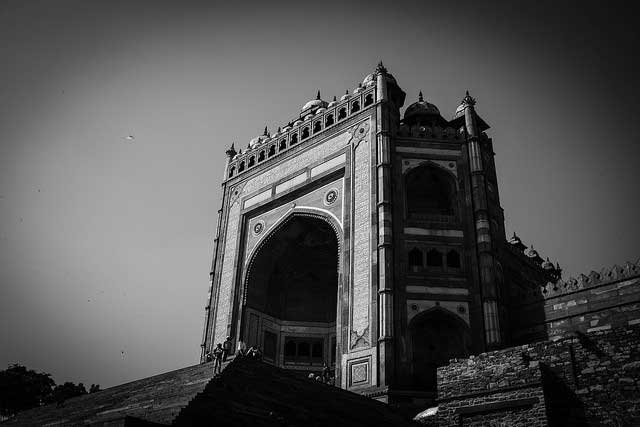
The name Buland Darwaza literally means magnificent gate in Urdu and the total height of the structure is 54 meters from the ground. It was built 1601, by the Emperor Akbar to commemorate his victory over Gujarat. The architecture of the doorway is unique and the craftsmanship is brilliant. Buland Darwaza is made from red sandstone with carved marble and granite inlays. On the main gateways an inscription in Persian reads ‘Jesus son of Mary said, “The world is a bridge pass over it, but build no houses upon it. He, who hopes for a day, may hope for eternity; but the World endures but an hour. Spend it in prayer for the rest is unseen”’. The inscription is exemplary of the religious tolerance during the reign of the great Mughal Emperor.
2. Diwan-I-Khas
Diwan-i-Khas (hall of the private audience) is one of the most interestingly orate buildings in Fatehpur Sikri. The most exquisite things to see here is the central tower which is also known the Lotus Throne is exemplary of the fine detail in this stone carved mastery. The pillar supports a walkway which connects the 4 corners of the first floor into a central circular platform meant for the emperor Akbar. The hall was meant for special people and religious leaders who wanted or were summoned for a private audience with the Emperor.
3. Jodhabai Palace (Mariam-uz-Zamani Palace)
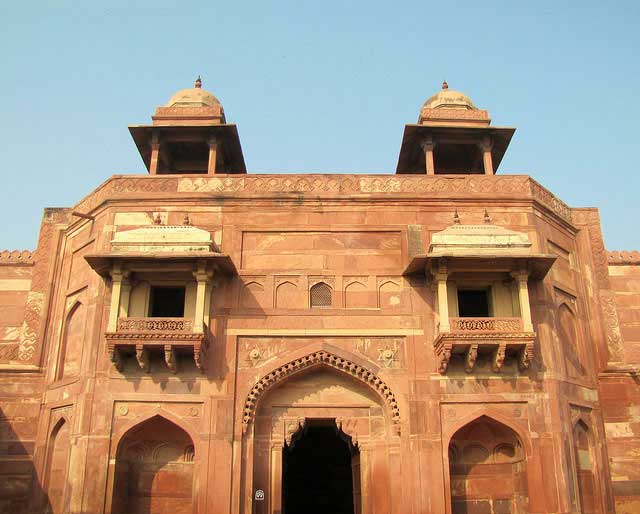
Known alternatively as Mariam-uz-Zamani Palace, the place was the living quarter of the Mughal Queen Jodhabai. Jodhabai Palace was also considered to be the Emperor’s Harem where the other women belonging to the women of the royal harem. Nevertheless the building is one of the most important buildings in the complex owing to its amazing architecture. The architecture is a rich amalgamation of the Hindu Rajputana styles with the Islamic Mughal style due to Jodhabai belonging to the Hindu Rajput clans of Amer (Jaipur).
4. Tomb of Sheikh Salim Chisti
The tomb of Seikh Salim Chisti is essentially the most important buildings in the palace complex and was built between 1580 and 1581. The building is made of carved white marble and is one of the finest examples of the artistic stone carving mastery in medieval India. The architecture is a cross between the Hindu and Mughal architecture and is surrounded with intricately carved marble screens known as ‘Jaalis’ from all sides. The mausoleum belongs to the Sufi saint Salim Chishti who lived at a ridge near the city. During the time the city was inhabited, it served as one of the major centers of the Sufi movement in India.
5. Jama Masjid
Jama Masjid or the central mosque was built by Akbar under the directions of Salim Chishti. The structure is rectangular and made with carved red sandstone. The inside of the mosque is decorated with stone carved Mirhabs or altars and is one of the prized collection of Mughal Architecture and marks the transition of the Islamic architecture which was combined with the Hindu style architecture.
6. Panch Mahal
Panch Mahal consists of 5 stories which are built in a pyramidal structure and are supported by a total of 176 columns. The pillars were separated with stone carved meshes or Jaalis in older times and were probably meant for the women of the Zanana enclosure that is located nearby. All the columns are made of sandstone and are intricately carved. The structure is also called the ‘Badgir’ or the wind catcher tower and the pool in front of the building is known as Anoop Talav. The main purpose of this building is known to be entertainment and was often used for various theatrical, musical and dance performances.
While there are several other important buildings at the palace city of Fatehpur Sikri, the aforementioned places are few of the most important and must visit tourist places in Fatehpur Sikri. This city is indeed one of the must visit places of Uttar Pradesh. A guided tour to this once pompous capital of the Mughals in India is a must to experience the true historic depth it contains.
More Uttar Pradesh Attractions:

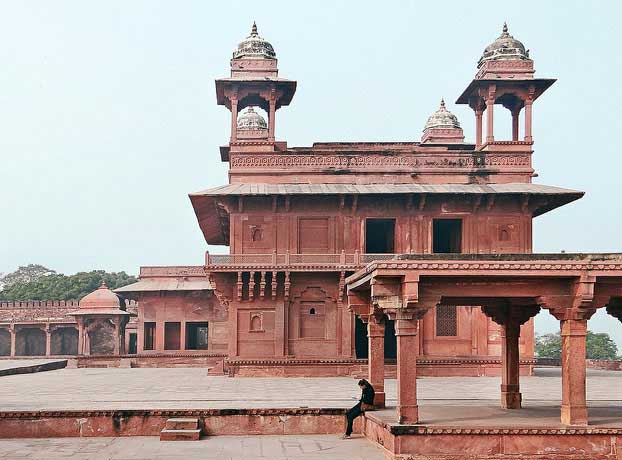
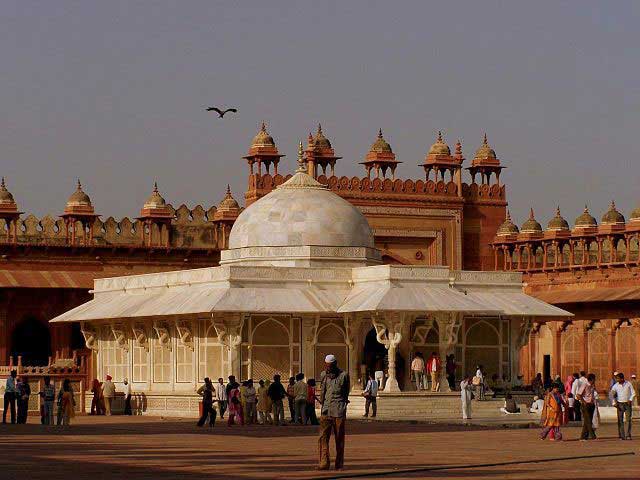
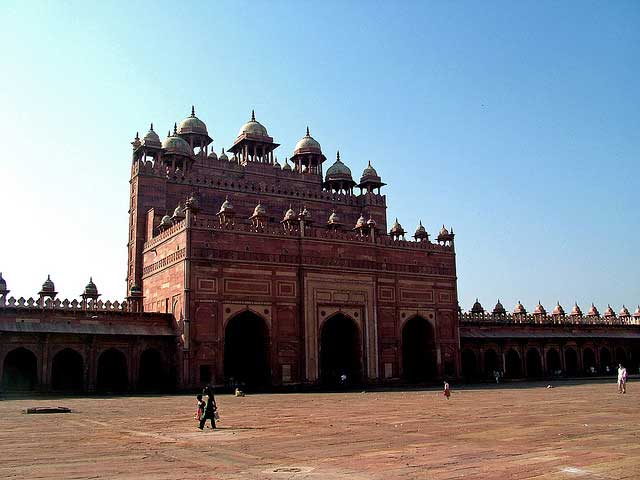
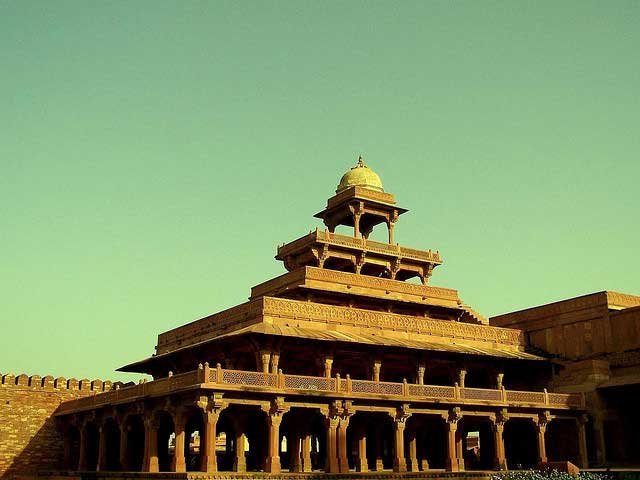

Though the monuments are good,the place is surrounded by Goons and frauds. They will make your vehicle stop far from the site and force you to take auto. Then they will force you to buy Dargah materials (chadar) etc at high price and guide charges as well….. Beware of them who ensure you spend rs. 2000 to them.
Can you please tell me on which day the Fatehpur Sikri is closed?